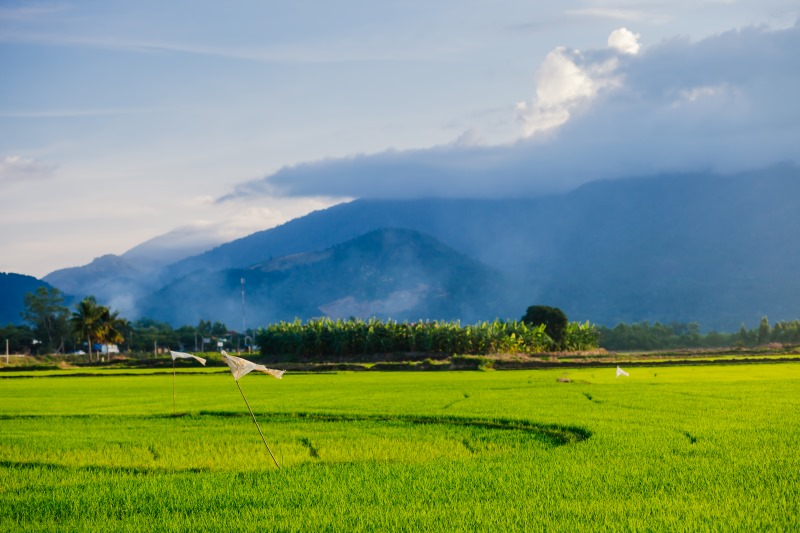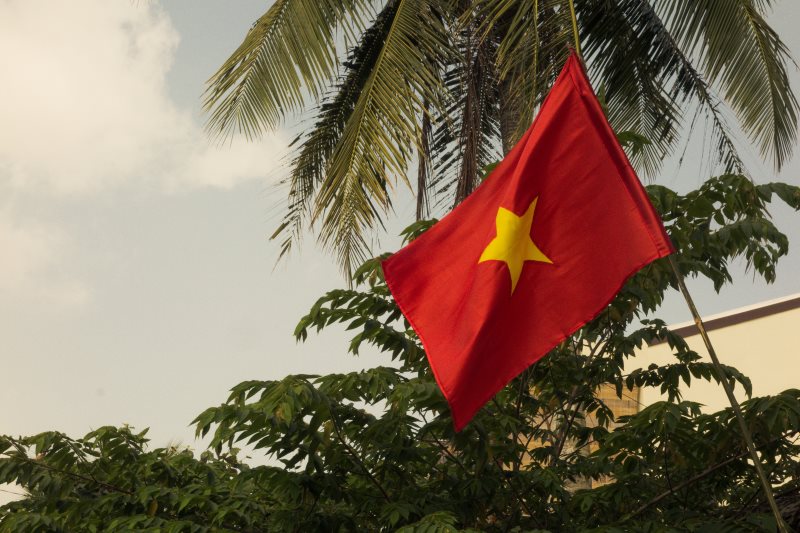
So what is the best time to visit Vietnam? The country, with its breathtaking landscapes, vibrant cities, rich history, and diverse culture, has become a popular destination for travelers from all around the world. Whether you’re seeking pristine beaches, ancient temples, lush mountains, or bustling markets, Vietnam offers a wealth of experiences to satisfy every traveler’s wanderlust. However, choosing the best time to visit this captivating country can greatly enhance your travel experience. In this article, we will explore the different seasons and regions of Vietnam, highlighting the best times to plan your visit.
As winter fades away, Vietnam embraces the vibrant colors and pleasant temperatures of spring. March to April is an ideal time to explore the northern and central regions, including Hanoi, Halong Bay, Sapa, and Hue. The weather is mild and comfortable, with temperatures ranging from 20 to 25 degrees Celsius (68 to 77 degrees Fahrenheit). Spring in Vietnam also brings a sense of renewal and celebration, with various festivals taking place, such as the Perfume Pagoda Festival and the Hue Festival. During this time, the landscapes come alive with blooming flowers and lush greenery, creating a picturesque backdrop for your travels. People who prefer milder weather will say that this is the best time to visit Vietnam.
In Hanoi, the capital city of Vietnam, spring brings a delightful atmosphere with blossoming cherry and peach trees. The streets are adorned with colorful flowers, and the city’s parks become popular spots for locals and tourists alike to enjoy picnics and outdoor activities. The famous Hoan Kiem Lake is particularly charming during spring, as the surrounding trees and flowers are in full bloom. Taking a leisurely walk around the lake or joining a Tai Chi session with the locals is a wonderful way to immerse yourself in the spirit of spring.
Halong Bay, a UNESCO World Heritage Site, is a must-visit destination in Vietnam. Springtime offers pleasant weather for exploring the bay’s iconic limestone karsts and emerald waters. You can take a cruise through the bay, kayak around the islands, or simply relax on the deck and soak in the stunning scenery. The mild temperatures of spring make outdoor activities more enjoyable, allowing you to fully appreciate the natural beauty of this breathtaking location.
Sapa, nestled in the Hoang Lien Son Mountains, is renowned for its terraced rice fields and vibrant hill tribes. During spring, the rice fields start to turn green, creating a captivating sight. Trekking through the terraced landscapes and interacting with the local ethnic communities is an enriching experience. You can witness their traditional customs, try local delicacies, and even stay in a homestay to immerse yourself in their way of life.
Hue, the former imperial capital, is a city steeped in history and culture. Springtime offers pleasant weather for exploring the city’s iconic landmarks, such as the Imperial Citadel and the Thien Mu Pagoda. The annual Hue Festival takes place in April, attracting artists, performers, and visitors from around the world. The festival showcases traditional music, dance, and art, providing a unique glimpse into Vietnam’s cultural heritage.
The summer season in Vietnam can be characterized by hot and humid weather, especially in the central and southern regions. Despite the high temperatures, this period offers fantastic opportunities to explore Vietnam’s stunning coastlines and pristine beaches. Places like Nha Trang, Da Nang, Hoi An, and Phu Quoc Island are particularly enticing during this time. The crystal-clear waters and blue skies make it perfect for swimming, snorkeling, and other water-based activities. Just remember to pack sunscreen and stay hydrated as the temperatures can rise above 30 degrees Celsius (86 degrees Fahrenheit). This is the best time to visit Vietnam if you enjoy high temperatures!
Nha Trang, located along the South Central Coast of Vietnam, is famous for its white sandy beaches and vibrant underwater world. The summer months provide excellent conditions for diving and snorkeling, allowing you to discover the colorful coral reefs and diverse marine life. You can also enjoy water sports like jet skiing and parasailing or simply relax on the beach and soak up the sun.
Da Nang, a coastal city known for its beautiful beaches and modern attractions, is a popular destination during the summer months. The famous My Khe Beach offers soft sand, gentle waves, and breathtaking sunsets. You can also visit the nearby Ba Na Hills, a hill station with a French village theme, where you can enjoy cool mountain air and panoramic views. Additionally, don’t miss the spectacular Dragon Bridge, which comes alive with a mesmerizing fire and water show every weekend evening.
Hoi An, a UNESCO World Heritage Site, is renowned for its well-preserved ancient town and lantern-lit streets. While summer can be hot and humid, the evenings bring a pleasant breeze, creating a magical ambiance for exploring the town. Strolling along the Thu Bon River and admiring the lanterns reflecting on the water is a truly enchanting experience. You can also participate in a lantern-making workshop or enjoy a traditional Vietnamese meal at one of the riverside restaurants.
Phu Quoc Island, located in the Gulf of Thailand, is a tropical paradise known for its pristine beaches and lush jungles. During the summer months, the island offers ideal conditions for beach activities like swimming, sunbathing, and snorkeling. You can also explore the island’s national parks, visit pearl farms, or indulge in fresh seafood at local markets. Don’t forget to catch the stunning sunset views from one of the island’s many beachfront resorts.
Autumn is considered by many as the best time to visit Vietnam, thanks to its pleasant weather, fewer tourists, and stunning landscapes. From September to November, the country experiences mild temperatures and lower humidity levels, making it comfortable for outdoor exploration. The rice terraces of Sapa are especially captivating during this season, as the fields turn golden and create a breathtaking tapestry against the backdrop of the mountains. The autumn months also coincide with the Mid-Autumn Festival, a delightful celebration featuring colorful lanterns, delicious mooncakes, and vibrant parades in cities like Hanoi and Ho Chi Minh City.
The northern region, including Hanoi and Sapa, experiences a pleasant climate during autumn. Hanoi, the bustling capital city, is known for its charming Old Quarter, colonial architecture, and vibrant street food scene. The pleasant temperatures make it enjoyable to explore the city’s attractions, such as the Ho Chi Minh Mausoleum, the Temple of Literature, and the Old Quarter’s narrow streets filled with shops and food stalls. You can also take a cyclo ride around Hoan Kiem Lake or enjoy a traditional water puppet show, a unique Vietnamese art form.
Sapa is a paradise for nature enthusiasts, especially during autumn when the terraced rice fields are at their most picturesque. You can embark on a trekking adventure through the terraced landscapes, visiting ethnic minority villages and immersing yourself in the local culture. The cooler temperatures make hiking more comfortable, allowing you to fully appreciate the breathtaking views of the mountains and valleys. Don’t miss the opportunity to witness the unique lifestyle of the local hill tribes and learn about their traditions and crafts. People who prefer a milder temperature and are looking for an active holiday will say that this is the best time to visit Vietnam.
Vietnam’s winter season is relatively mild compared to many other countries, making it a great time to visit if you prefer cooler temperatures. The north and central regions, including Hanoi, Halong Bay, and Da Nang, experience cooler weather with temperatures ranging from 10 to 20 degrees Celsius (50 to 68 degrees Fahrenheit). This is an excellent time to explore the historical sites, indulge in delicious local cuisine, and immerse yourself in the rich cultural heritage of Vietnam. However, it’s important to note that the central and southern regions can still be warm during winter, so if you’re seeking cooler weather, focus on the northern areas.
Hanoi, the capital city, takes on a festive atmosphere during the winter months, especially in December when Christmas decorations adorn the streets. The cooler temperatures make it ideal for exploring the city’s landmarks, such as the Ho Chi Minh Complex, the One Pillar Pagoda, and the charming French Quarter. You can also warm up with a bowl of steaming pho (traditional Vietnamese noodle soup) or indulge in other local delicacies like banh mi (Vietnamese baguette sandwich) and egg coffee.
Halong Bay, with its mystical limestone karsts and emerald waters, is a breathtaking sight during winter. The cool weather adds a touch of mist and mystique to the bay, creating a unique ambiance. You can take a cruise through the bay, explore hidden caves, and marvel at the towering limestone formations. Spending a night on a traditional junk boat and waking up to the serene beauty of Halong Bay is a truly unforgettable experience.
Da Nang, located along the central coast, offers a pleasant escape from the winter chill. The city’s beautiful beaches, such as My Khe and Non Nuoc, provide a relaxing environment for sunbathing and beach activities. Da Nang is also home to the iconic Marble Mountains, a cluster of limestone hills with caves, pagodas, and panoramic viewpoints. The cool temperatures make it comfortable to explore these natural wonders and take in the breathtaking views of the surrounding landscape. Holidaymakers who want to avoid the busy season will say that these winter months are the best time to visit Vietnam.
Vietnam is a geographically diverse country, with varying climates across different regions. So the best time to visit Vietnam can vary by region. The north experiences distinct seasons, with a colder winter and a hot, humid summer. Central Vietnam has a tropical climate, while the south enjoys a warm and humid climate year-round. When planning your visit, consider the specific regions you wish to explore and their corresponding weather patterns to make the most of your trip.
In the northern region, including Hanoi, Sapa, and Halong Bay, the temperatures can drop significantly during winter, so be sure to pack appropriate clothing to stay warm. The summer months in the north can be hot and humid, while spring and autumn offer milder temperatures and pleasant weather.
Central Vietnam, including cities like Da Nang, Hoi An, and Hue, experiences a tropical climate with hot and humid summers and milder winters. The region is prone to typhoons and heavy rainfall during the rainy season, which typically falls between September and December. It’s advisable to check weather forecasts and plan accordingly if you’re visiting during this period.
Southern Vietnam, encompassing Ho Chi Minh City, the Mekong Delta, and Phu Quoc Island, has a warm and humid climate throughout the year. The dry season, from December to April, offers more comfortable temperatures and lower humidity levels. The rainy season, from May to November, brings frequent showers and occasional storms, but it’s still possible to enjoy your visit with proper planning.
Vietnam is a land of contrasts, offering a myriad of experiences for every type of traveler. Choosing the best time to visit Vietnam depends on your preferences and the activities you wish to engage in. Whether you want to witness the vibrant festivals, embark on a trek through the mountains, relax on pristine beaches, or explore ancient temples, there is a perfect time to visit this enchanting country.By considering the seasons and regional variations, you can plan your trip accordingly and make the most of your Vietnamese adventure. So, pack your bags, embrace the beauty of Vietnam, and create memories that will last a lifetime!
Remember, the best time to visit Vietnam is always when you are ready to embark on a new and exciting journey!




Questions or interested in advertising? Mail info@love2blog.com